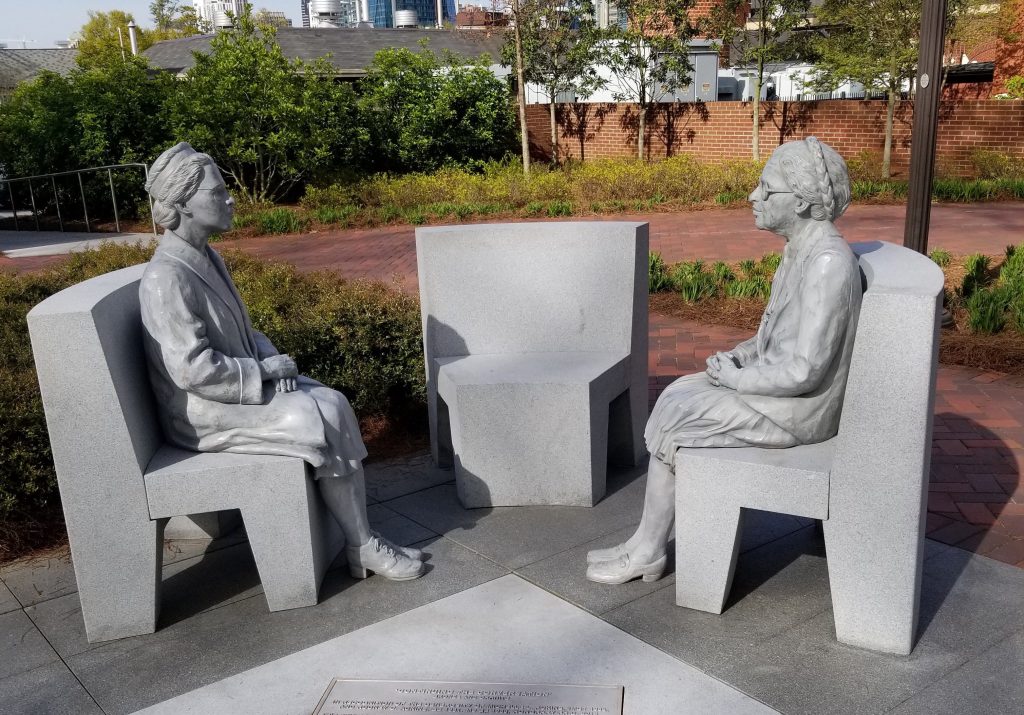A new art installation was unveiled on the campus of Georgia Institute of Technology this afternoon in honor of civil rights icon, Rosa Parks. Yesterday marked the 50th anniversary of the assassination of Dr. Martin Luther King, Jr. and it seemed extremely pertinent and timely to hold the intimate unveiling ceremony that revealed an interactive sculpture that captures the quiet courage, wisdom, and thoughtfulness of the late Mrs. Parks. “We are honoring her, but we are also recognizing the whole civil rights movement,” said Georgia Tech Provost Rafael Bras.
Commonly known as the “mother of the Civil Rights Movement,” Rosa Parks demonstrated a lifetime of courageous acts in the name of social justice and equal rights. She is best known for defiantly refusing to give up her bus seat to a white passenger in 1955 for which she was arrested and fined. This resulted in the 381-day Montgomery Bus Boycott that brought National attention to those working to improve civil rights issues, such as Dr. King, and ultimately resulted in an end to the systemically racist Jim Crow era.
 Photo credit: Renita Moore
Photo credit: Renita Moore
The funds to bring this poignant addition to the GT campus were generously donated by Georgia Tech Black alumni, Dr. Rod and Mrs. Michelle Adkins. They enlisted sculptor, Martin Dawe, who was also the creator of the King sculpture that now stands on the state Capitol grounds in Washington, D.C. Dawe calls the Parks installation “Continuing the Conversation.” It depicts two bronze and granite sculptures of Mrs. Parks at different ages (ages 42 and 92, respectively) in conversation with one another. The two Parks sculptures are seated across from one another while another “vacant” seat is present in the middle. The idea is to have passersby engage with the thought of having a conversation with Mrs. Parks at these two points in her life and what that exchange might yield.
“This will speak to our young folks who lose contact with all that happened in the past to get us where we are today,” said Michelle Adkins.

Photo credit: Renita Moore
The installation sits in Harrison Square, a plaza on central campus that is named for GT’s sixth president, Edwin D. Harrison. Harrison served in this role during the heart of the Civil Rights movement and made the unprecedented decision to admit three Black students in 1961 prior to an official court order to do so. This bold move made GT the first major university in the deep south to integrate without a court mandate.
The unveiling ceremony was attended by numerous members of Parks’ family, extended King family, local Atlanta and Georgia state leadership, and an array of GT students, faculty, and staff. According to the National Park Service, of the 152 monuments and parks under their care, only three are dedicated to women, including the Harriet Tubman historic site in Maryland. We couldn’t be more elated to add Mrs. Parks’ name to this list!

